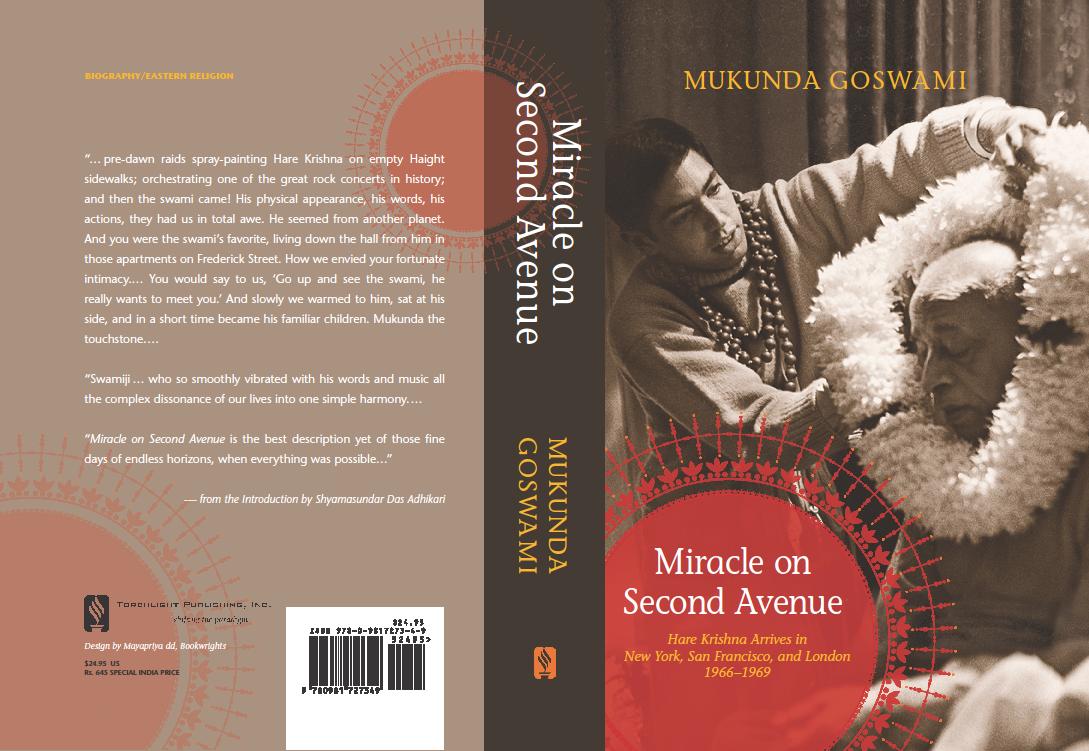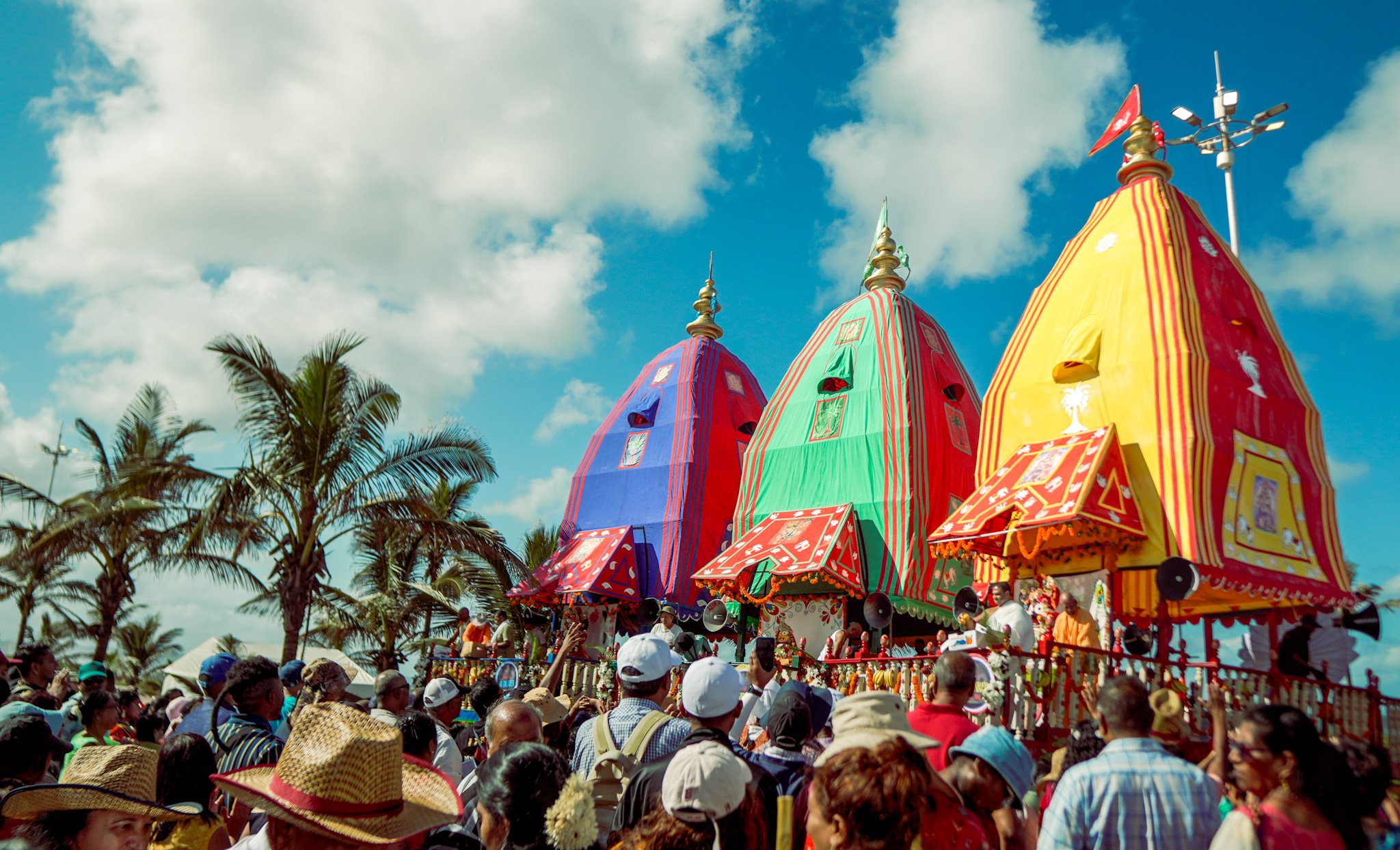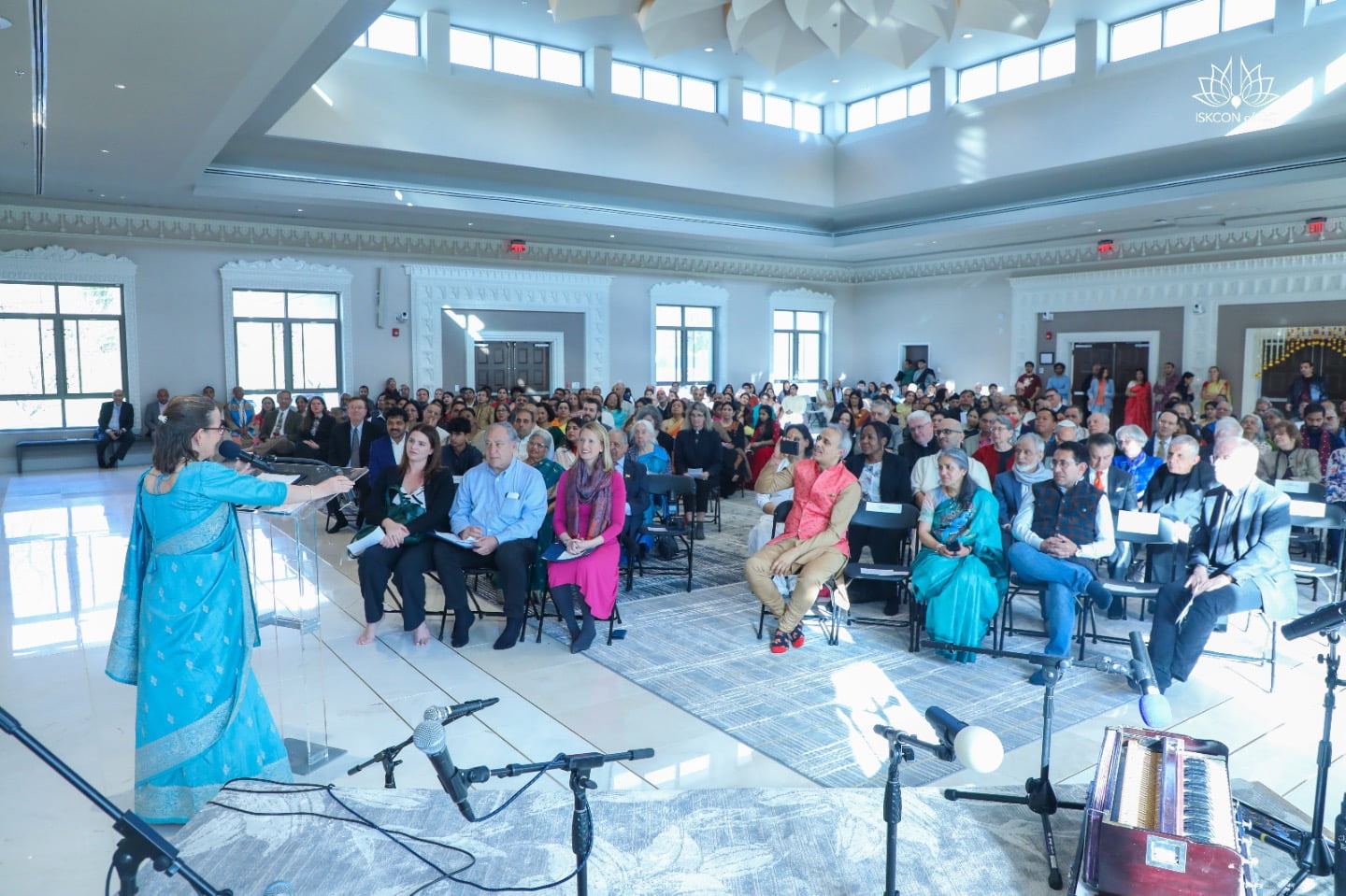Mukunda Goswami’s “Miracle on Second Avenue” Set for June Release
By Madhava Smullen | Mar 06, 2011

ISKCON guru Mukunda Goswami’s long-awaited memoir of the early days of the Hare Krishna Movement in New York, San Francisco, and London—entitled Miracle on Second Avenue—was ceremonially “offered” to the Deities of Sri-Sri Pancha-Tattva at ISKCON’s headquarters in Mayapur, West Bengal on February 23rd.
Although the official release date isn’t until June, advance copies of the book are available at publisher Torchlight’s booth at Mayapura’s Gaura Purnima Festival, which runs until March 21st.
Mukunda Goswami’s memoir has always been highly anticipated, since he was in the very first group of devotees to be initiated by Srila Prabhupada in 1966, and has served Prabhupada’s movement faithfully since. His memories were always expected to give us a truly special glimpse of the early days of ISKCON.
And early word is that they do exactly that.
“Its great reading—personal, intimate, and with many previously unheard details,” said GBC member Anuttama Dasa, reading the book in between ISKCON management meetings in Mayapur. “It’s also expertly written through the eyes of the times rather than as later reflections, which makes it immediate, accessible and insightful.”
“Miracle on Second Avenue is the best description yet of those fine days of endless horizons, when everything was possible,” writes Shyamasundar Das Adhikari—a close companion of Mukunda Goswami in those pioneering days—in his introduction to the book.
It was in 1965 that Srila Prabhupada, at seventy years old, arrived in New York City determined to start a worldwide spiritual movement. After a harrowing sea journey on the freighter Jaladuta, where he suffered two heart attacks, he set foot on American soil with nothing but a few cases of books and eight dollars. But there were people who wanted to help. And from a small storefront on Second Avenue in New York’s East Village, the spiritual movement he envisioned miraculously began to take form.
That’s where Mukunda Goswami’s vividly personal and up-close account begins, detailing the the years from 1966 to 1969, and describing the optimism and energy of the early followers of Srila Prabhupada, whom they then affectionately called “the swami.”
Mukunda Goswami takes us to the Bowery where, as Michael Grant, he first helped “the swami” move from a dingy rented loft to a small Lower East Side storefront in Manhattan—thus founding the first Krishna temple in the West.
“Srila Prabhupada was alone in an Artists-in-Residence loft,” he tells ISKCON News. “He was living like a sadhu, modestly and in abject poverty. I joined because I wanted to help him.”
Soon after, on September 8, 1966, Michael and ten other newcomers were initiated as Mukunda, Janaki, Hayagriva, Umapati, Ravindra Svarupa, Raya Rama, Karlapati, Jagannath, Stryadhisa, Satyavrata, and Janardana.
“I remember Srila Prabhupada conducted a fire yajna,” says Mukunda Goswami. “We all had beads, which he asked us to touch to the feet of Lord Chaitanya, whose painting was framed in a makeshift altar in the room.”
Gradually Prabhupada’s number of followers increased, drawing the attention of many icons of the sixties such as poet Allen Ginsberg.
During 1967, the “Summer of Love,” Mukunda and his then-wife Janaki, along with two other couples—Shyamasundara and Malati, and Gurudasa and Yamuna—opened a temple in San Francisco’s Haight-Ashbury neighborhood, the center of the hippie movement, and brought Prabhupada from New York to join them.
There they hosted the Mantra Rock Dance concert, where “the swami” appeared alongside some of the biggest names in rock music, such as Janis Joplin and the Grateful Dead. Thousands chanted along with Srila Prabhupada, and cemented his small movement’s importance to the American counterculture.
In 1967, the same small pioneering group of Mukunda and his friends headed to London. There, they befriended George Harrison and John Lennon of the Beatles. George helped them open a center and produced the Radha Krishna Temple album on the Beatles’ Apple Records. Two singles from the album, Govinda and Hare Krishna Mantra, quickly rose to the top of the British charts, leading to devotees appearing on Top of the Pops and turning Hare Krishna into a household phrase.
It was successes such as these in New York, San Francisco and London that catapulted ISKCON into a worldwide phenomenon. In Miracle on Second Avenue, Mukunda Goswami brings the reader along with him through those magical times—and we feel the intimacy the early followers had with Srila Prabhupada, and experience the movement’s formative years.
Mukunda Goswami says that the 452-page book, which he started writing in 1996 due to popular demand, took him eight years to complete.
“I always hated Marcel Proust’s several-thousand page memoir, Remembrance of Things Past, but this was different—I enjoyed writing about my own past,” he says. “It was exciting, even inspiring. I would get up very early in the morning to write—about 3:00am most of the time. And I wrote most of the book from memory, with the help, of course, of some research and a few interviews.”
Despite having had such a prominent hand in the early days of ISKCON, and having remained a faithful servant of Srila Prabhupada through so many years, Mukunda Goswami remains refreshingly unassuming and humble.
“I’ve tried to adjust to the many changes ISKCON has undergone in 44 years,” he says. “At 68, I just feel lucky to be alive and overjoyed to see that ISKCON is continuing because of the energies of people much younger than me.”
He feels that devotees today can learn much from the early days of ISKCON, and from the many senior ISKCON devotees—even those who have passed on—through their recorded talks, living standards, and writings.
But the early ISKCON devotees could have learnt a lot from today’s devotees too, he says: flexibility without compromise, willingness to change, the importance of learning, knowledge and philosophy.
As for the advice he has for younger devotees, it’s simple, straightforward, and powerful:“Follow the vows you took at initiation as strictly as possible, read Srila Prabhupada’s books daily, spread Krishna Consciousness somehow, follow ISKCON authorities, and stay in ISKCON,” he says.
Miracle on Second Avenue (Hard bound with jacket, 95 photographs, 452 pages) is currently available at ISKCON Mayapur’s Gaura Purnima festival. It will go on sale at ISKCON retailers and Amazon.com in June.












